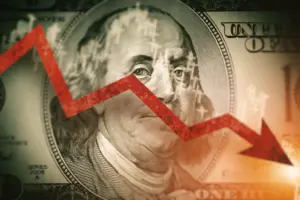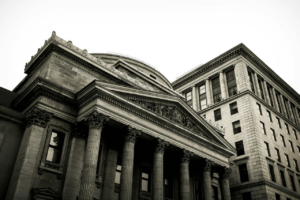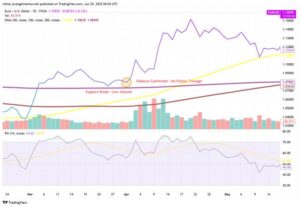Ever looked at the news and wondered why the dollar is “strong” one day and “weak” the next? Or why your holiday money doesn’t stretch as far as it used to? That’s currency fluctuation – and it’s not random. It’s driven by real, powerful forces. Let’s break it down in a way that actually makes sense.
First, What Is Forex?
Forex stands as an abbreviation of "foreign exchange" which operates as the worldwide market where currency trading occurs. The process of foreign exchange trading involves the immediate purchase of one currency along with the sale of another currency with the expectation of earning profits from value fluctuations between them. The forex market operates without a single central location because banks and brokers and traders from all over the world connect through a 24-hour network.
In forex, currencies are always traded in pairs – EUR/USD, GBP/JPY, etc. When you conduct EUR/USD trading you simultaneously purchase euros while selling US dollars. The exchange rate provides the value ratio between two different currencies.

Why Do Currency Values Change?
Here’s where things get interesting. Currencies move because of supply and demand – just like products in a shop. But what affects that supply and demand?
The three main factors that drive currency value changes include:
1. Interest Rates
Interest rates stand as one of the leading causes which drives currency fluctuations. The increase of interest rates by a central bank in a country leads foreign capital to be attracted to the country. Why? Higher interest rates create better investment opportunities for both savings and investments.
Example: Higher interest rates in the US create conditions where investors across the globe decide to invest their money into US dollars because of the higher yields available. The increased USD demand causes the dollar value to rise.
2. Economic Strength
Currency values tend to match the economic performance of a nation. The currency value of a country tends to rise when it demonstrates low unemployment rates together with strong GDP expansion and stable inflation levels.
A strong economy functions like a green light for investors since they place their trust in the country through currency purchases.
Example: Economic reports demonstrating that the eurozone achieved better-than-expected growth rates cause the euro to rise against other currency values.
3. Political and Global Events
The currency market responds to all types of events including wars along with elections and trade tensions. Market uncertainty causes traders to shift their investments from risky currencies toward safer options.
The category of safe-haven currencies includes three currencies namely the US dollar, Swiss franc, and Japanese yen. The market demand for these currencies tends to increase whenever situations become more tense.
Example: The euro weakens when traders choose to sell their euros to purchase USD because European geopolitical tensions escalate.
The Lightbulb Moment
Currencies don’t just bounce around for fun – they react to how confident (or cautious) the world feels about a country’s future. It’s a bit like a popularity contest, driven by logic, expectations, and sometimes fear.
Every move in the forex market tells a story. Traders try to read that story – and trade on what might happen next.
Final Thought
Understanding why currencies move is key to making sense of the forex market. It’s not about predicting the future perfectly – it’s about recognizing the signals.
If you’re ready to dive deeper into currency trading, EC Markets is here to guide you every step of the way.





